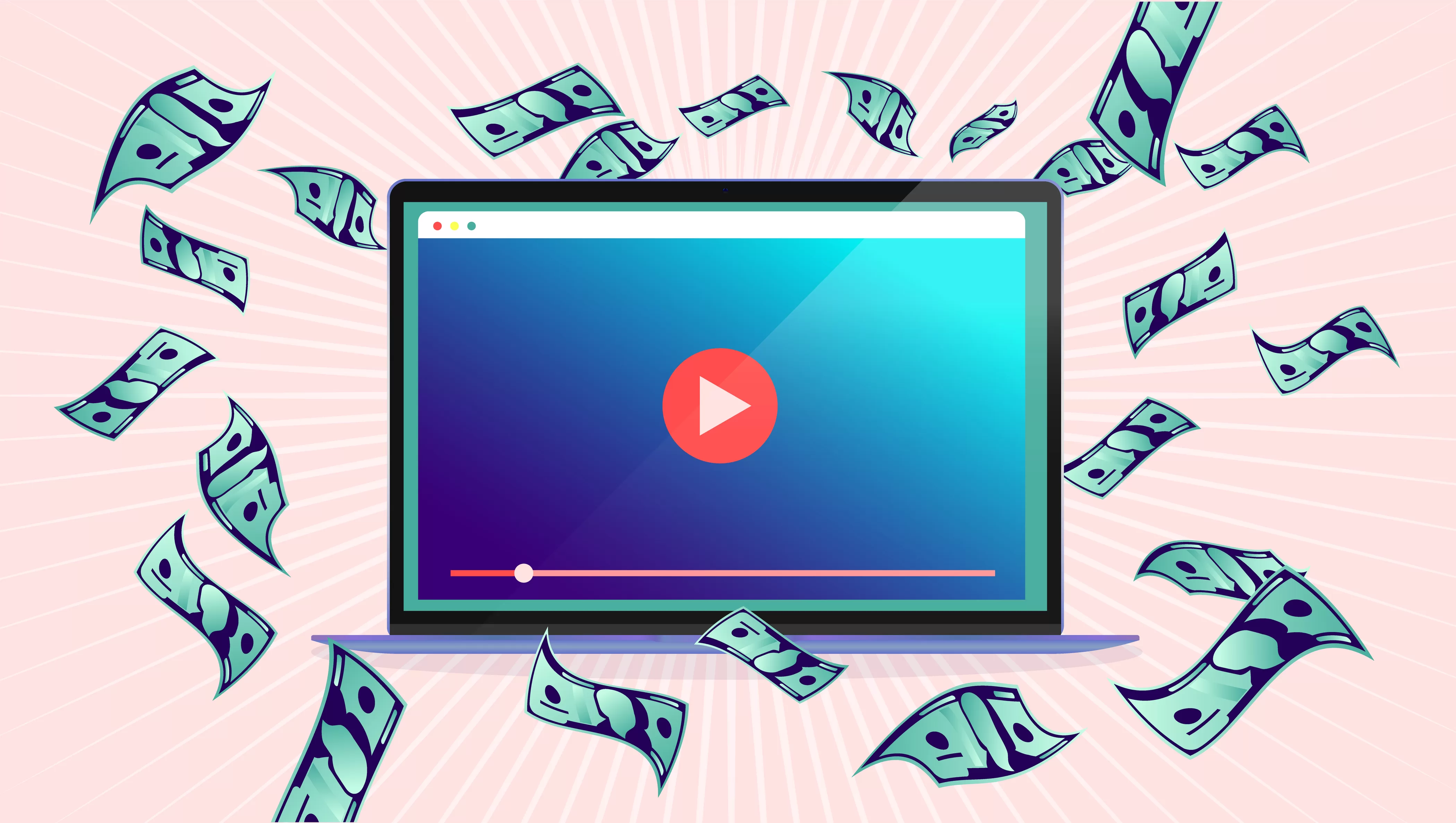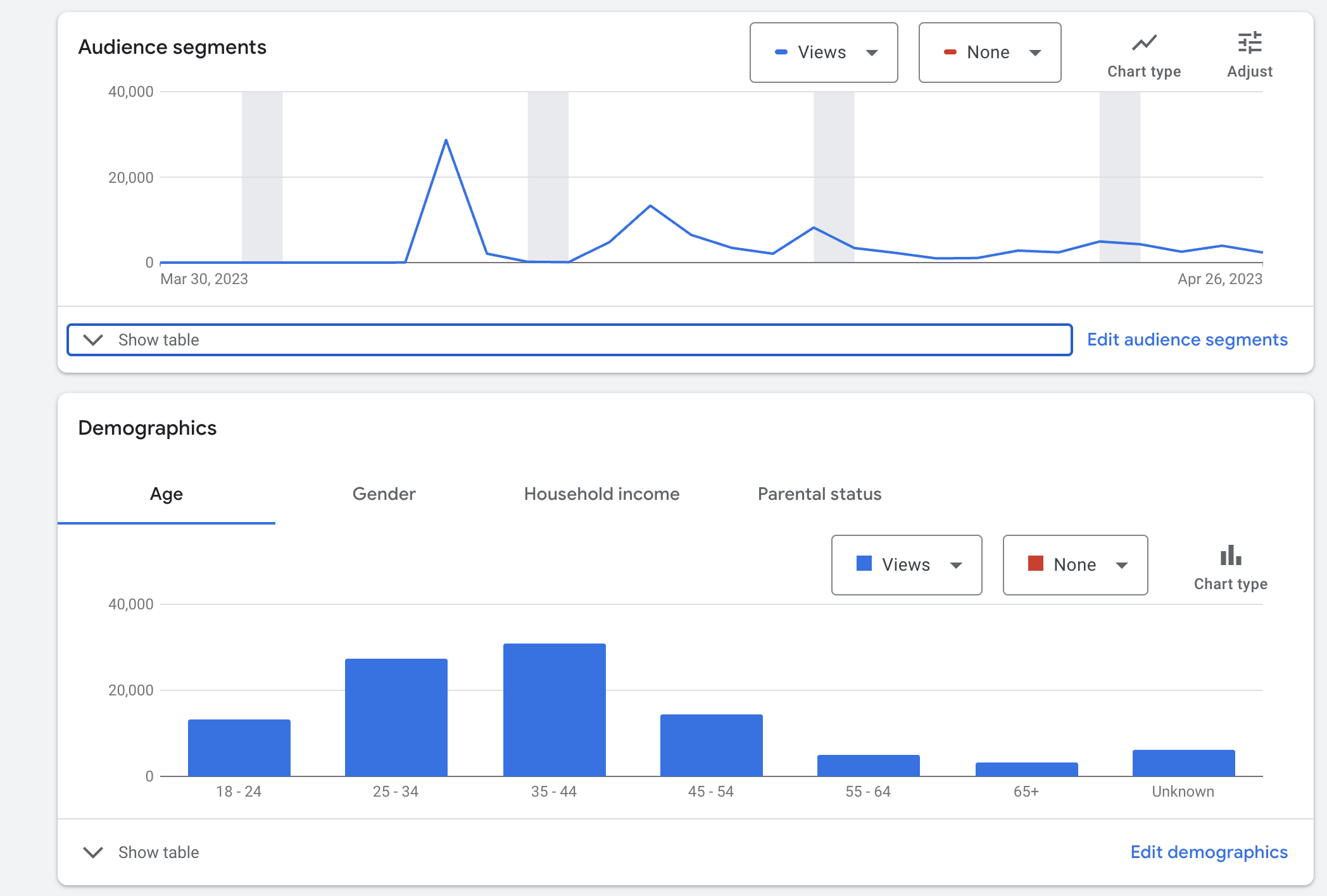
YouTube is known as the second-largest search engine and, at the same time, one of the most visited websites in the world. No wonder advertisers want to show their products and services on this platform. However, I still get a lot of questions about YouTube ads cost. For most people, advertising their business on YouTube seems like an expensive way. It seems that even Today navigating the world of YouTube ads cost can be daunting.
In this article, I will provide a comprehensive breakdown of YouTube ads cost, helping you understand the factors that contribute to pricing and equipping you with strategies to optimize your ad spend.
The Basics of YouTube Ads
Before diving into the cost breakdown, it’s crucial to understand the types of YouTube ads available and the targeting options that can help you reach your desired audience. What campaign type you choose to run might impact your costs. What many don’t know is that the more targeting options you select the more expensive it will be. Think of each target as a multiplier.
Types of YouTube ads
I’m sure you have seen a few videos on Youtube. Most likely, the ads you can skip or the ones you can’t. These are just two types out of 6.
- Skippable in-stream ads
- Non-Skipable in-stream ads
- In-feed video ads
- Bumper ads
- Outstream ads
- Masthead ads.
Even though there are six types, we will focus on the first 4. The reason is that Outstream ads are not available on Youtube, only on partner websites. And Masthead ads are available only through Google representatives.
A skippable or non-skippable in-stream ad is an ad you see either before the start or in some part of the video. You either see a “Skip” button or not (Bumper ads, non-skippable). I’m sure you hate these the most. But jokes aside, these ads are shown in full to a user, meaning someone watched your ad 100%. Unless, of course, they got pissed and closed the browser or clicked on another video.
In-feed ad is kind of like a display ad. You can watch it only if you click on it. You pay only if someone clicks on your video, which is not played automatically. This format is less popular.
The most popular format is skippable ads. It’s the ones with the skip button. You have 5 seconds to grab users’ attention before the “skip” button becomes active.You might also see other type of ads on YouTube. And even though they are not part of video ads, you can use them to promote stuff on YouTube.
Display ads: These ads appear on the right-hand side of the YouTube website or above the video suggestions list, and they can be either images or rich media. This is not a Youtube Campaign type. It’s just a display ad that can be shown on YouTube website, as a placement.
Overlay ads: Semi-transparent banner ads that appear on the lower part of the video, typically available for desktop users. Same as display ads.
Targeting options
It is essential to think hard about the audience that will see your ad. You don’t want to be wasting money on people with no interest in having any business with you. This is one of the first ways to make sure your costs stay low. This is only a brief overview. If you want to learn more, there is a separate chapter about YouTube ads in my new book “Google Ads Blueprint”.

Demographics: Target your ads based on age, gender, parental status, and household income.
Audience segments: Reach users based on their interests, such as sports, technology, or fashion. Or create your own audience based on specific criteria.
Remarketing: Show ads to users who have previously interacted with your content or visited your website. You will create this under audience segments.
YouTube Ads Pricing Model
Understanding the pricing models for YouTube ads is essential for managing your ad spend effectively. There are two main pricing models: cost-per-view (CPV) and cost-per-thousand impressions (CPM).
Cost-per-view (CPV) model
CPV is the amount you pay when a viewer watches at least 30 seconds of your ad or interacts with it (e.g., clicks a call-to-action). This pricing model is used for video ads, such as skippable and non-skippable video ads.
Advertisers set a maximum CPV bid, which is the highest amount they’re willing to pay per view. YouTube runs an auction to determine the actual CPV, which can be lower than the maximum bid but never higher.
Cost-per-thousand impressions (CPM) model
CPM is the amount you pay for every 1,000 times your ad is shown, regardless of user engagement. This model used when you want reach more than an action from users. Usually it is used by bigger companies as it requires a lot bigger budget. Also, the goal is usually to introduce something new to a very wide audience and does not require immediate action from the user.
Advertisers set a maximum CPM bid, and YouTube runs an auction to determine the actual CPM. Like CPV, the actual CPM can be lower than the maximum bid but never higher.
CPV is generally more cost-effective for advertisers focused on driving engagement, as they only pay when users watch or interact with their ads. However, CPV may result in fewer overall impressions. On the other hand, CPM can help advertisers achieve broader reach and increased visibility, but it may not guarantee user engagement or action. Ultimately, the choice between CPV and CPM depends on your campaign goals and objectives. But if you have a small budget, anything under $10 000 per month or you just starting out, I would not recommend CPM model.
Factors Affecting YouTube Ads Cost
Several factors influence the cost of YouTube ads, including ad type and format, audience targeting, geographical location, industry competition, and the quality and relevance of ad content. To be honest, this is true for other ad types as well.
Ad type and format: Different ad formats may have varying costs. For example, non-skippable video ads can be more expensive than skippable video ads due to their guaranteed view time. Bumper ads, with their short duration and CPM pricing model, can also differ in cost compared to other ad formats.
Audience targeting: More specific targeting may result in higher costs, as competition for a particular audience segment can increase bids. However, highly targeted ads can lead to better engagement and ROI. In other words, the higher costs is a trade off for a better engagement and possibly revenue.
Geographical location: Advertising costs may vary based on the country or region you are targeting. For example, targeting viewers in the United States may be more expensive than targeting those in emerging markets. This is true for all campaigns. The price varies greatly depending on the country.
Industry competition: Competitive industries, such as insurance or e-commerce, may have higher advertising costs due to increased demand and competition for ad placements. Personally, I tend to ignore competition, because there is nothing I can do about it. Instead of worrying about high prices due to competition, I spend time thinking how can I outsmart them.
In practice, most YouTube views cost a few cents. The mentioned factors do have an impact, but sometimes it’s not about that at all. You can reduce the cost by trying different formats or using less targeting options. But that might not be the best way to optimise your campaigns. Take a look at this screenshot.

The cost per view varies greatly, but it’s low. In other words, it doesn’t cost a lot to get a paid view on YouTube. What is harder is to get some sort of action, like click or conversion.
Now look at the CPC column. The clicks are way more expensive. Even more that they are on Search ads. And that is the biggest downside, it is not that easy to get a click. An even though the cost per view is low, you need a lot of views to get an action from user.
Cost-effective Strategies for YouTube ads
As with any campaign, there are plenty of things to do to cut your costs. But remember, that this is not your primary goal. Your goal is to get conversions and if those conversions are too expensive, only then you think about optimising the ad spend.
Setting a daily budget: This is the basic, right? You need to calculate how much you want to spend a month and set a daily budget. The overall budget depends on your business goals. For example, if you’re selling an expensive item, you will need a higher budget as it takes take to convince the user to spend that money. I would recommend starting somewhere from $10 to $20 a day and then optimise from there.
Optimising bids: Monitor your campaign performance and adjust your maximum CPV or CPM bids as needed. When starting out you can set a maximum CPV of about $0.05. Check on the campaign the next day and see if it has impressions. If not, increase to $0.10. Repeat the process until you start receiving impressions. After a while, if you’re hitting the budget limit, you can start reducing CPV by about 10%, see if you can find a sweet spot.
Monitoring and adjusting campaigns: Regularly review your ad performance using Google Ads reports, and make data-driven adjustments to your targeting, bids, and ad content. Don’t just leave it running for a month. This is a great way to waste your money. If you have several campaigns and videos, try to compare them and see which is doing better. Learn from it. If you have several audience segments, do the same and try to understand why one is performing better.
Creating high-quality, engaging ad content: There is a limit of what you can do in the account. Don’t forget about what your users see – you video. Invest in creating compelling ads that resonate with your target audience. I’m sure you saw one or two videos and thought to your self “wtf”. Don’t be that business.
Refining audience targeting: I briefly mentioned that, but what makes YouTube quite expensive is not the CPV price. It’s the fact that you have to find the audience that converts, and that takes time and money. Continuously refine your targeting to focus on the most relevant and engaged audience segments. Better targeting can lead to improved ad performance and ROI.
Utilizing remarketing campaigns: Remarketing allows you to show ads to users who have previously interacted with your content or visited your website. These users are more likely to engage with your ads, making remarketing a cost-effective strategy. What I would recommend is creating different ads for this audience. These people already “know you”, try to engage them with something different. The upside of remarketing is that it doesn’t cost a lot, since you’re targeting only the people who have been on your site. Well, unless you’re Amazon, in which case it will not be cheap.
Conclusion
Understanding YouTube ads cost is crucial for optimizing your ad spend and achieving the best possible return on investment. By considering the factors that influence ad costs, leveraging industry-specific benchmarks, and implementing cost-effective strategies, you can make the most of your YouTube advertising budget. Use the insights and best practices shared in this article to optimize your campaigns, and start experiencing the power of YouTube advertising today.
I share weekly tips on how to create, manage, and scale Google Ads campaigns. Subscribe to my free newsletter.
I’m also down with connecting on LinkedIn.
Or follow me on X, for some quick updates and fast insights.